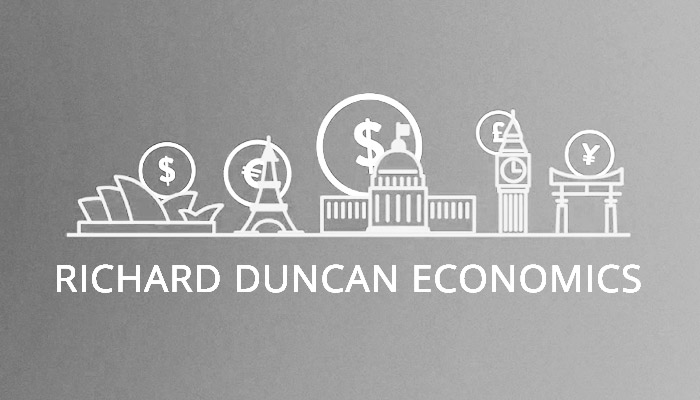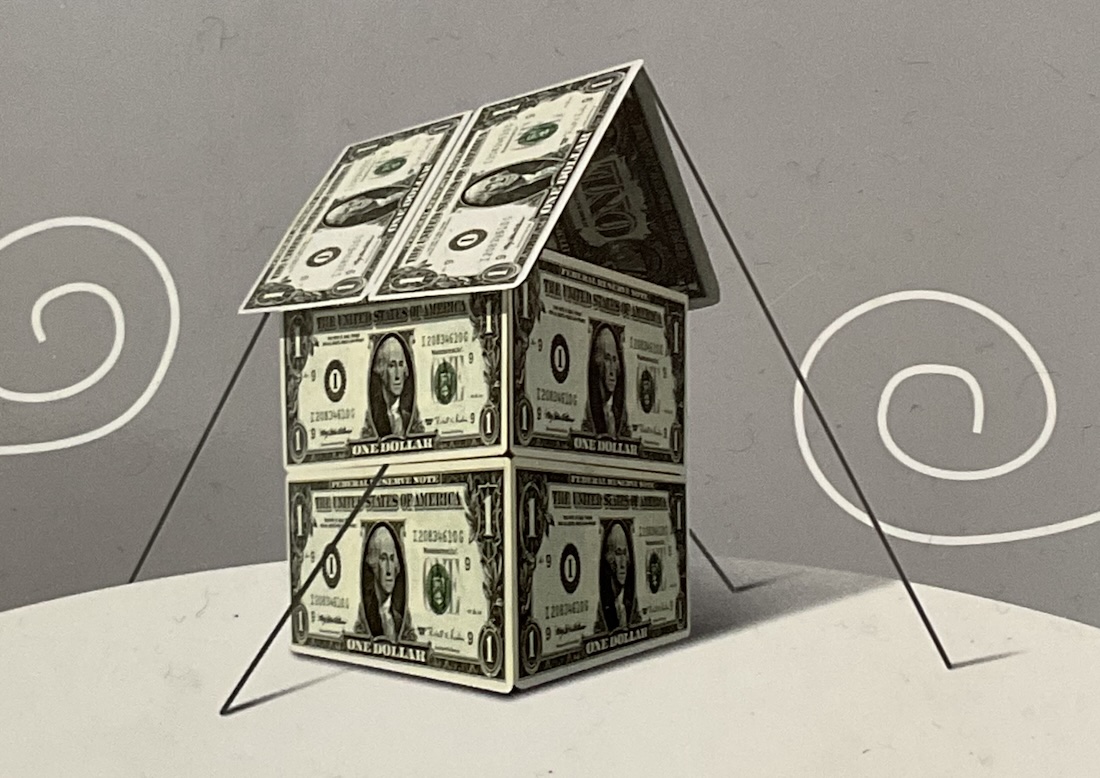THE PRESENT: ON THE BRINK OF DISASTER

Posted December 15, 2010
The global economy is in crisis. Government intervention on a multi-trillion dollar scale is the only thing preventing a worldwide collapse into a new great depression.
This crisis is structural, not cyclical. At its core is the fact that global production, swollen by limitless credit denominated in fiat money, greatly exceeds the consumption that can be financed by the income of the individuals who comprise the world’s population. Governments around the world are borrowing, printing and spending on an unprecedented scale to absorb the global excess capacity (and to prevent asset prices from deflating), but these measures cannot continue indefinitely. The structure of the global economy is unstable and unsustainable. A catastrophic economic breakdown may be unavoidable.
Globalization has put intense downward pressure on wage rates in industrialized countries at a time when the abandonment of sound money unleashed an explosion of credit that allowed industrial production around the world to soar. Tens of millions of new manufacturing jobs have been created in developing economies, but adverse demographic trends have prevented wages from rising. The prevailing wage rate in the manufacturing sector is roughly $5 per day across much of the developing world. To put this wage structure into perspective consider that two billion out of the world’s seven billion people live on less than $2 per day. This crisis then must be understood in terms of excess production relative to purchasing power.
Between 1970 and 2008, the ratio of total credit to GDP rose from 170% to 370% in the United States as American consumers became caught up in the culture of credit. Rapid credit expansion fuelled asset price bubbles in stocks and property that allowed Americans to continue spending more each year even though average wage rates had stagnated. The credit boom allowed the American social contract, premised on steadily rising prosperity, to remain intact despite the downward pressure globalization exerted on wages. Credit-financed consumption pulled imports into the US. The rest of the world responded by expanding industrial production to sell into the US market.
In 2008, when the US private sector became incapable of supporting its debt load, the driver of global growth, US consumption, went into reverse, global trade crashed and the global economy spiraled toward disaster. Governments stepped in and caught the collapsing global economy in a safety net woven with the equivalent of trillions of dollars in deficit spending and trillions more in newly fabricated money. Global demand was maintained by government spending and transfer payments; bankrupt banks were made whole by access to free money from central banks; and asset prices were supported by ample liquidity. And that’s where we are today, on government life support.
There are just two problems. First, the government intervention is unsustainable. Second, nothing whatsoever is being done to address the causes of the crisis: the flaws in the global monetary and trade superstructure, and insufficient aggregate demand. Governments will only be able to conduct deficit spending on the current scale for a few more years before the public sector becomes as bankrupt as the private sector; and if the Fed and other central banks around the world carry on with the current pace of Quantitative Easing (i.e. money printing), their currencies will lose all value within a decade.
This crisis will not end until the structural defects responsible for causing it have been corrected. This will require the creation of a new international monetary system designed to prevent large and persistent trade imbalances between nations. The Dollar Standard, the current international monetary system, is inherently flawed because it lacks any mechanism to ensure balanced trade. That flaw is responsible for the growth of the global imbalances at the root of this crisis.
Next, the gap between the capacity of the world to produce and the level of income available to fund consumption must be filled by increasing income. The alternative, significantly decreased production, is the very definition of a depression. At present, no steps are being taken in this direction. Wages in the developing world are stuck at $5 per day; and depressed wages there are putting downward pressure on wages everywhere else.
The United States is the world’s largest economy, comprising more than 20% of global GDP. Unemployment there is nearly 10%. The US economy is no longer viable because wage rates in the US manufacturing sector are 40 times higher than wage rates in the developing world. There is no sign that either political party has a strategy that could reverse the country’s rapid economic decline. A protectionist backlash against free trade appears increasingly inevitable.
US trade tariffs would be bad for America, terrible for the world and catastrophic for China and all the other countries dependent on export-led growth. It is important to understand that as grave as are the challenges confronting the United States, those faced by China are even worse. The US can’t produce as much as it consumes, but China – and most other export-led economies – can’t consume as much as they produce. If international trade breaks down, production in China would collapse, unemployment would soar and political unrest would explode.
And, there’s more. The crisis in the global financial system is far from resolved. The global banking industry may prove to be so exposed to toxic assets of its own creation that it simply can’t be saved. The industry has conjured into existence derivative worth approximately $700 trillion, an amount equivalent to the value of everything produced on earth during the last 20 years. It is a matter of public record that these financial instruments have been employed to illegally manipulate the accounts of numerous large corporations. It may be only a matter of time before losses (and fraud) related to “structured finance” are exposed on a scale that will make Bernie Madoff look like a small town rascal in comparison.
Run away credit growth, mismanaged trade, financial sector deregulation and numerous other policy mistakes have brought the world to the brink of disaster. If a breakdown of the global economy is to be averted, policymakers must confront the structural nature of this crisis and quickly implement an aggressive strategy to restructure and rebalance the global economy. This can be done, but only a five to 10 year window of opportunity exists. Beyond that timeframe, the financial resources now available to governments to fund that transition will have been exhausted and a global economic calamity with untold geopolitical consequences will have become unavoidable.


Excellent article detailing the current state of the global economy, encompassing a wide view of the facts, and outlining its future prospects.
In my view, any future massive quantitative easing globally will not occur by proactive intervention, but as a result of a last gasp effort when we come to the precipice of another US banking system collapse. The 700 trillion dollars of derivatives trading (a good percentage of it bordering on illegal) will come to the forefront of economic calamity, causing severe implications around the globe. The problems started principally with the US banking system as well as others in developed countries, and until those systems are cleansed of fraud and unexposed debt, their slates wiped clean, no semblance of normality is in sight.
This worldwide debt crisis is something like a bear market. And bear markets generally end with some sort of catastrophic collapse.
Unless a viable solution to the debt crisis unfolds soon, it is likely the global community is in for a sustained period of highly political and social unrest. As you note, the brink of disaster is here now. Depression may be the reality of the future.
Very good article. I agree with most of the statements in the article.
China would definitely suffer when US trade tariffs emerge, but at least they will still have the means of production. Clearly, much capital has been misallocated there, but they do have some real wealth and capital (and see where they were 20-30 years ago). The transition to a different economic model will be difficult and painful, but not impossible for them (this may include war/increased defense expenditures too). On the other hand, the effects on the US can be catastrophic too. They US cannot produce as much as it consumes, true. Nevertheless, increasing production would be difficult with the current global wage differences. If there are tariffs coming up, then the whole US economic mantra of “global free trade”, capitalism, etc. would come under fire, the creditworthiness of the US would suffer and the dollar would cease to be the reserve currency. Consumption reduction/decreasing standard of living would result in political unrest and possibly civil war.
The question is whether the global economic situation is so dire that given the current trends it would result in a total collapse (e.g. the Fall of Rome in the US), or it will play out smoothly with the quick transfer of wealth; e.g. those who have paper assets will lose much of their wealth and those who have real wealth preserve some capital. And then the whole inflation game can start again.
Great article explaining the state of the world economy in a simple, easy to understand and logical manner.
https://www.marketoracle.co.uk/Article24581.html